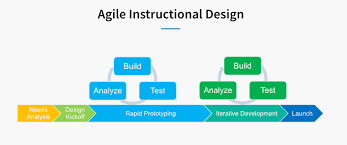
Agile methodologies have long been a staple in the software development world, known for their flexibility, adaptability, and potential to produce high-quality results quickly. Today, these same principles are being applied to instructional design, offering a new way to develop educational and training programs that meet learners’ needs more closely than traditional models.
Instructional design typically involves creating educational content and experiences to help people learn new skills or knowledge. The shift towards Agile in this field is driven by the need for more responsive and learner-centered approaches. Agile methodologies prioritize collaboration, iterative development, frequent feedback, and the ability to adapt to changes swiftly.
One of the main Agile frameworks used in instructional design is the SAM model, or Successive Approximation Model. Unlike the traditional ADDIE model (Analysis, Design, Development, Implementation, and Evaluation), which is linear and can be slow to adapt to changes, SAM promotes rapid prototyping and successive refinements. This means that instructional designers quickly produce a prototype after an initial analysis phase and then refine it through successive iterations based on stakeholder feedback.
This Agile approach offers several significant advantages:
1. Responsiveness: Agile instructional design allows for adjustments based on learner feedback or changes in objectives. If something isn’t working well for students, it can be modified right away rather than waiting until the end of the project.
2. Collaboration: Learners, subject matter experts, designers, and instructors can all provide input throughout the process. This collaboration ensures that the final product is more relevant and effective.
3. Engagement: By involving learners in the design process through prototype testing and feedback sessions, they become more invested in the material.
4. Efficiency: Iterative design can lead to faster delivery of educational materials since improvements are made continuously rather than after extensive periods.
5. Quality: Frequent testing and refinements tend to result in higher quality outcomes as issues are identified and resolved early in the process.
The challenges of adopting Agile methodologies in instructional design shouldn’t be overlooked either. For one, there’s a steep learning curve for those accustomed to traditional methods. Additionally, constant iterations require significant flexibility from all stakeholders involved. However, when implemented effectively, Agile methodologies can lead to innovative learning experiences designed for today’s fast-paced world.
In conclusion, Agile methodologies represent a forward-thinking approach to instructional design that can cater better to the evolving needs of learners. By emphasizing flexibility, collaboration, and continuous improvement, these practices may very well represent the future of how educational content is crafted across various fields.
